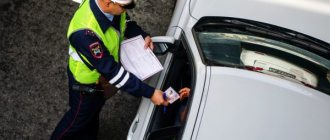"Antique Cars" is a company specializing in services related to vintage cars: sales, investments and creation of collections, complete restoration and partial repairs, maintenance, conservation and consultations. Retro cars produced more than 30 years ago are called oldtimers in many countries. And indeed, looking at them, it seems as if you were in another time. But time, about which machines can tell a lot, was inexorable to them, in some places truly merciless: they aged and rusted, silently and slowly, year after year, structural chemical changes occurred in the materials from which the parts were made, and structural elements accumulated microdamages caused by operation. Car restoration is a painstaking and lengthy process. It can take years to complete the original parts and restore a collector's car, but each specific case has its own nuances.
This section describes in detail the stages of restoration of vintage cars:
- Dismantling and disassembling a retro car, cataloging parts, removing old paint, cleaning the body.
- Production/repair of body parts made of steel, aluminum, fiberglass.
- Car chassis restoration.
- Painting works.
- Technical repair of all components of a retro car.
- Overhaul of engine and gearbox.
- Galvanic work when restoring a retro car.
- Restoration of the interior of a retro car.
- Works on wooden coverings.
- Manufacturing and repair of electrical wiring.
- Complete with missing parts. Manufacturing of lost elements.
- Sewing and restoration of a soft roof. Convertible mechanics repair.
- Testing and delivery.
After reading this section, you will learn how we will restore your old timer. Our company uses Western experience in restoring vintage cars: parallel operations, skilled labor, strict compliance with technical specifications and design drawings - this is the key to the success of the repair and restoration process. Below you will find several video examples of work already completed, as well as a detailed description of the car restoration process.
You can get acquainted with examples of completed work in this (click on the link to go) section, and below we will analyze the process of car restoration step by step. After signing the contract and delivering the vehicle to one of our workshops (Dmitrov, Dubna, Sergiev Posad, Aberdeen), the restoration process itself begins, in which several stages can be distinguished:
Stage 2. Production/repair of body parts made of steel, aluminum, fiberglass
Argon welding of aluminum is a painstaking and complex process, which is due to the chemical properties of aluminum. When you try to weld aluminum in a normal atmosphere, an oxide film instantly forms on the surface of the metal, which prevents further work. Therefore, the use of conventional electric arc welding when working with aluminum parts is impossible. To carry out such work at a high level, several components are required: argon, high-quality consumables, good modern equipment, and, most importantly, professional specialists. We managed to combine all of the above in our workshops. We receive consumables from such European suppliers as RoSlov company and Bohler Scheweisstechnik Austria GMBH. We managed to create conditions for attracting the most experienced specialists who have worked for many years in the production of military equipment of the USSR. Therefore, in the field of argon welding there are no unsolvable tasks for our employees. Using argon-arc welding, we carry out repair and restoration of engine cooling radiators, aluminum tubes, and car body parts.
Alfa Romeo 6C SS replica model work
Alfa Romeo 6C SS body frame manufacturing
Steyr 630 (left) Alfa-Romeo 6C 2500 (right)
Manufacturing of the BMW 328 body frame
Manufacturing of Mercedes 770 body frame
Manufacturing of body panels for Mercedes 300 Sl
Manufacturing of ZIS 110 elements
Mercedes 300 SL body frame
Body work ZIS convertible
Restoration of the Horch 853 body
Welding of ferrous metals is carried out according to generally accepted standards and technologies. Welding equipment is used for arc welding with coated electrodes, semi-automatic consumable electrode welding in carbon dioxide and gas welding.
If a car has a wooden frame, we restore it from the appropriate types of wood: beech, ash, oak are used to recreate the wooden body frame of retro cars, and acacia wood is used to restore wooden wheels.
The extensive experience of our craftsmen allows us to take into account all the nuances when carrying out tin work. If the damage to the original part is minor, then local repairs can be carried out using a special, gentle technology, which can be important given the age of the metal. If it is impossible to restore or a part is missing, it is manufactured again according to the original drawings.
If the original design of the car contains fiberglass parts, we restore them. If the part cannot be restored, we search for and purchase the missing spare part. It is also possible to produce a complete copy of the original fiberglass part, in agreement with the customer. In cases of work on creating replicas of cars and custom ones, the production of fiberglass body parts is one of the key stages.
SERVICE CATALOG:
Body
- Nanoceramics Ceramic Pro 9h
- Car detailing
- Titanium body protection
- Quartz car body protection
- Car body protection
- Body protection from scratches
- Body protection from chips
- Anti-corrosion treatment
- Car polishing
- Pasting with SunTek film
- Taxi car wrap
- Removing paint defects
- Repair of body chips
- Removing scratches
- Dent Removal
- Car painting
- Local painting
- Local bumper painting
- Bumper repair
- Local body repair
- Car body repair
- Complex body repairs
Salon
- Pre-sale preparation
- Car interior dry cleaning
- Interior restoration
- Repair of burns
- Interior treatment
- Seat reupholstery
- Frame covers
- Door reupholstery
- Painting the steering wheel
- Car steering wheel reupholstery
Glass
- Reservation of headlights with film
- Glass polishing
- Anti-rain Ceramik Pro Rain
- Anti-rain for car
- Car tinting
- Headlight polishing
Other
- Car noise insulation
- Noise insulation of wheel arches
- Bottom treatment
- Wheel painting
- Locksmith repair
- Removing poplar marks
- Motorcycle polishing
- Car wash
- Steam engine cleaning
- Steam radiator cleaning
- Test service
DO YOU DOUBT THAT:
- the cost of car restoration be unexpectedly high, forcing you to go into debt?
- Will the qualifications of auto repairmen be low? They will not be able to identify and eliminate hidden damage?
- Don't have the parts you need on site?
- Will eliminating defects require additional time?
Stage 11. Manufacturing and repair of electrical wiring.
Naturally, when making a wiring harness for a retro car that is being restored, we use authentic materials and not only the color, but also the cross-section of the wires fully corresponds to the car that came out of the factory 50-80-100 years ago, thanks to this, the car after restoration will be ready to withstand the most strict examination and will have maximum financial and collection value. And for our clients who are preparing a car for operation, we will be able to add a package of modern options (from an audio system and a rear view camera, to air conditioning and heated seats) and style them to match the overall design concept of a retro car.
Jaguar XK140
ZIL 41047 tuning, connecting the instrument panel
Manufacturing a wiring harness for Mercedes W113
Connecting electrical wiring BMW 340 coupe
Mercedes 129 roof controller repair
ZIL radio repair
Mercedes 300 SL electrical wiring assembly
Installation of the Mercedes 300 SL dashboard
Restoring a car at a dealer: an inside look
A traffic accident, unfortunately, is an integral part of a motorist’s life. Drivers regularly get into minor or, God forbid, major accidents. It’s good if the car saves you from injury or even worse. The “iron” is made, after all. But we decided to see how it’s done, going “behind the scenes” of the body section of a multi-brand dealership.
First of all, it is worth understanding at whose expense the broken car will be restored. Actually, there are two options: at your own expense or at the expense of the insurance company. In the first case, if the damage is significant, you will have to mentally prepare yourself for colossal expenses, sometimes comparable to the cost of a new car. In the second, to possible long-term waste of time. But first things first.
Any repair begins with an initial assessment, which is carried out by a body shop inspector, sometimes together with a molar or mechanic. The initial assessment is carried out, as they say, “by eye”, since experienced service employees, who sometimes arrange for dozens of damaged cars to be repaired every day, can already tell offhand, within the limits of error, how much it will cost to repair certain damages.
Why “by eye”? Because the stated preliminary cost of repairs sometimes makes the client want to immediately ask the technician for validol. In this case, the client understands what to prepare for, and whether he will contact the dealer at all. But this only applies to those who are planning renovations using their own money.
Unfortunately, the cost of restoring foreign cars, all spare parts for which are purchased abroad for foreign currency, multiplied by the pricing policy of individual brands with an added dealer markup, sometimes causes bewilderment even among the dealership employees themselves.
If the client is satisfied with the stated preliminary price, the car is accepted for work, the first stage of which is its disassembly and a complete and accurate assessment of the restoration repair. To ensure that the work is not done in vain, and the client does not change his mind, he will be required to make an advance payment in the amount of 20-30% of the preliminary assessment amount - a kind of insurance in case of failure.
The same thing happens in the case of repairs at the expense of the insurance company, only the cost of preliminary repairs is no longer decisive here, and payment is guaranteed by a referral from the insurance company.
There is a “fable” that body shop employees, when dismantling a damaged car, remove from it, among other things, entire spare parts, which the mechanics allegedly sell externally, and the dealer at the same time receives money for them from the insurance company or clients. It was enough to look at the mountains of broken parts to understand that this was not so. Moreover, all controversial issues regarding the replacement or repair of a specific part must be agreed upon, photographed, and, if necessary, presented to the client, the insurance company, or even the quality department of the company’s Russian representative office.
After disassembling the car, a list with the required number of parts is transferred to the spare parts department. This list is usually huge, and, of course, not everything is in stock - a lot is made to order with a waiting period of up to a month. At the same time, the list and cost of plumbing and painting work are calculated.
Contrary to the belief that all dealer prices are taken almost out of the blue, and the craftsmen randomly name the first number they come across, determining the client’s solvency “by guess”, the entire cost is calculated almost automatically. The price is compiled in a special service program by the brand representative, and not by the dealer.
If the program says, for example, that to remove the engine crankcase protection, conditionally, one standard hour and 3000 rubles are needed, then twirling your finger at your temple and swearing at the acceptance technician is useless - he is not able to change the program, even if In fact, the mechanic spent five minutes on this procedure. The employee only enters the necessary work, spare parts and the number of standard hours into the program, only being able to apply discounts, and even then within certain limits. The final estimate is presented to the client, with whom all the nuances are discussed and agreed upon, after which the car, in service language, “goes to work.”
Things are much more complicated when repairs are carried out at the expense of the insurance company. The estimate sent by the dealer goes through the insurance procedure of verification and recalculation. The insurer's own specialists evaluate the legality of replacing or repairing a particular part, check its cost and the possibility of keeping the old part. This process is called approval and for very large repairs it sometimes takes months, with the insurance company literally fighting for every nut replaced.
A case was recorded at the station when the owner of a Peugeot 307, which was involved in a serious accident, waited a year and a half for approval - all this time the dealer and the insurance company “fought” for every penny. Alas, our legislation in this case is not on the client’s side - the law obliging repairs to be made within 45 days does not apply to road accidents and body restoration.
And yet, let’s imagine that everything ended quickly and successfully and the car fell into the hands of an experienced professional. Restoration work is truly a complex and time-consuming process. Returning hardware to its original shape is always not easy, but not as much as it was just ten years ago.
In the minds of most car owners, in order to straighten an element, it is necessary to take a hammer and apply brute physical force to its inside. Although this method is used for certain types of work, it is still giving way to modern technologies. For example, the extraction of dents, especially when they cannot be approached from the other side, occurs using a spotter - a special device for micro-welding. With its help, the “recessed” element is connected to the tool and then pulled back to its original position. This method is much faster, and most importantly, more effective than a traditional hammer.
In the event of a serious accident, when damage has occurred to the load-bearing structures of the body, a special robotic slipway is used that stretches its geometry. The principle of operation is simple but effective: the load-bearing parts are held by the element, and sometimes welded at the required distance and left in this position for several days. During this time, the metal brought to the “correct” position “calms down” and returns to its place again.
An interesting fact is that the dealer buys the tools necessary for the “forging” at his own discretion, choosing what suits him best both in price and ease of use. Only brand-approved locksmith equipment needs to be brand-approved.
Once the structure of the car has been restored, it is time for painting work, which is divided into two parts: preparation and painting. The first stage, including degreasing, grinding and priming the elements, can be called standard. There is no need for any specific knowledge or skills other than accuracy and a well-trained hand. Here's the paint job...
The first step is for the colorist to get to work. Despite the creative name of the profession, the work of this specialist is quite routine. For a long time now, no one has been engaged in selecting paints based on colored fans - it is almost impossible to accurately “get into color” in this way. Therefore, every modern car has a code for the paint color it is painted with.
Using this code, a program is used to determine which colors and in what proportions need to be mixed to obtain the desired shade. After mixing, the specialist paints a “sample” with the resulting mixture, and if it matches, the prepared paint is given to the painter.
All elements that do not require painting are sealed. The car at the dealership, of course, is painted only by hand using a “gun” - there are, of course, no robots here like at the factory. Therefore, the professionalism of the painter is the main key to success.
By the way, there are no professional educational painting institutions in Russia. All car painters are self-taught, who become apprentices in their youth and first “give the teacher rags” for a year before trying to paint something themselves. Therefore, the professionalism of a painter does not consist of textbooks, but solely of a demanding mentor, hard work and, of course, talent.
A total of 40 people work in two shifts at the dealership's body shop. The guys' work is not easy. The official “body shop” is a non-stop assembly line that restores about 160 cars per month. There is no room for creativity and no time for mistakes or rework. Otherwise, there will be problems with clients, reprimands and fines, both for employees and for the company as a whole.
It is worth noting that the dealer also chooses equipment for the paint shop independently, based on his own requirements, and not orders “from above” from the brand’s representative office. Moreover, almost all equipment, including painting and drying booths, is provided to the official service free of charge by the paint manufacturer, with whom the dealer must sign a long-term purchase contract.
The last stage is assembly. The car is assembled to a completely complete state and sent to the mechanic shop, where it undergoes, if necessary, and corresponding damage, in fact, another maintenance. The functionality of all components and assemblies is checked, and working fluids are added. Then the car is sent to be washed and the interior cleaned, after which the receptionist dials the client’s number and says the long-awaited phrase for him: “Your car is ready.”
The editors of the “Engine” magazine express their gratitude to the AutoPremium Group of Companies, the official dealer of the Peugeot, Skoda, DongFeng, Geely and Chery brands in St. Petersburg for their assistance in preparing the material, as well as personally to Yuri Agibaylov, the company’s senior consultant for body service.
Video about car restoration in the company’s workshops:
Video report on the restoration of Oldsmobile 98
Video report on the conversion of ZIL 4104
Video report on the restoration of Alfa Romeo
Video report on the restoration of Lagonda V12
Video report on the restoration of GAZ 21
To learn more about the work performed, go to the “our work” section (click on the link to go).










